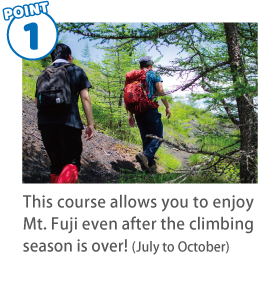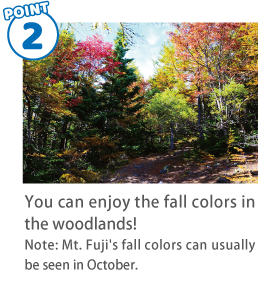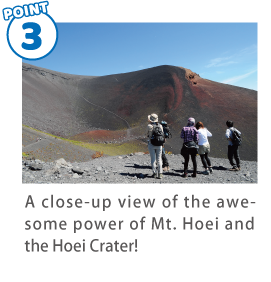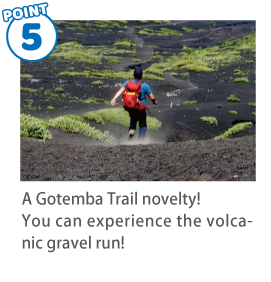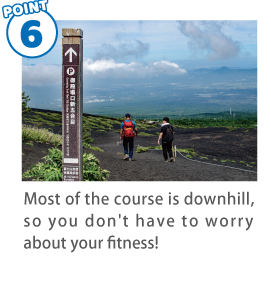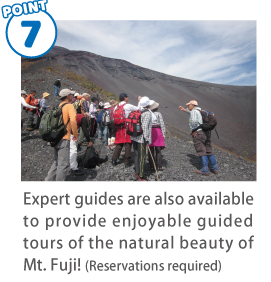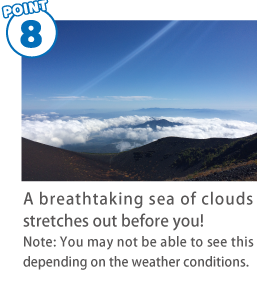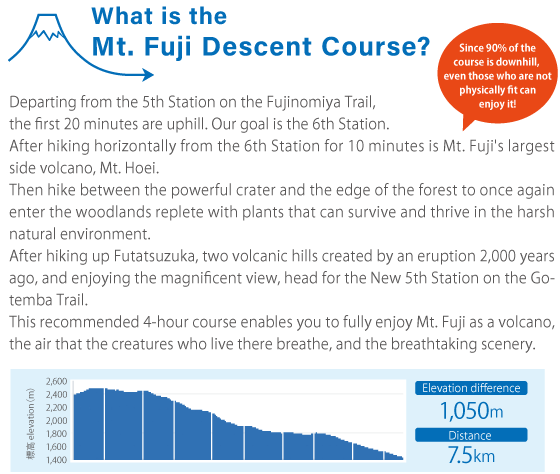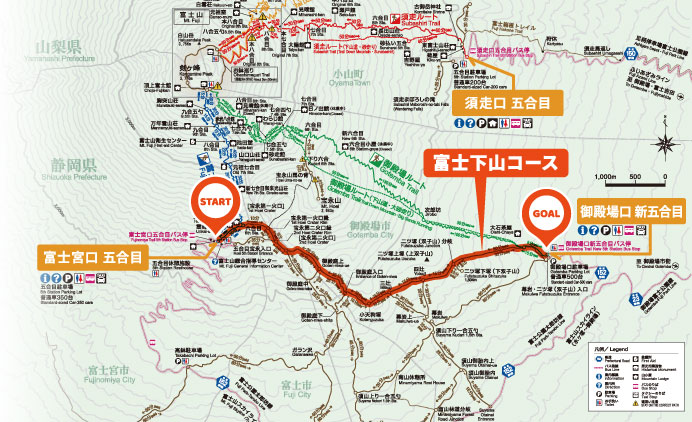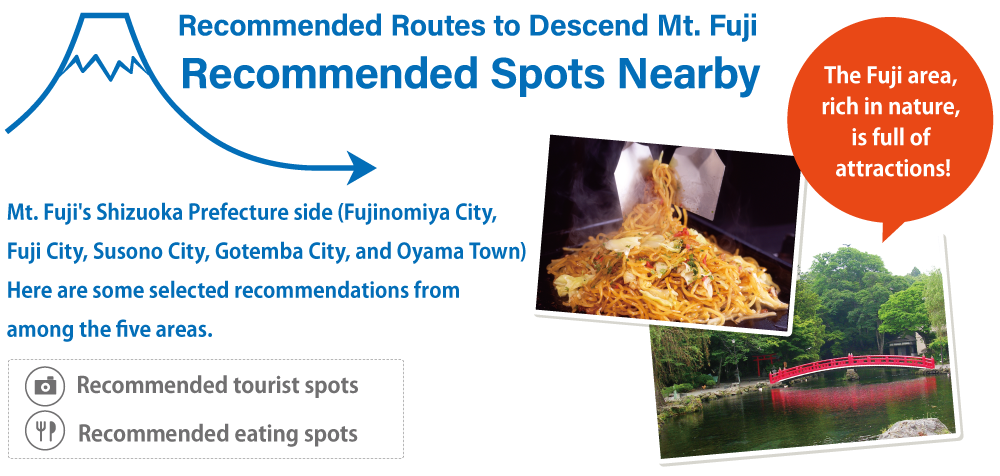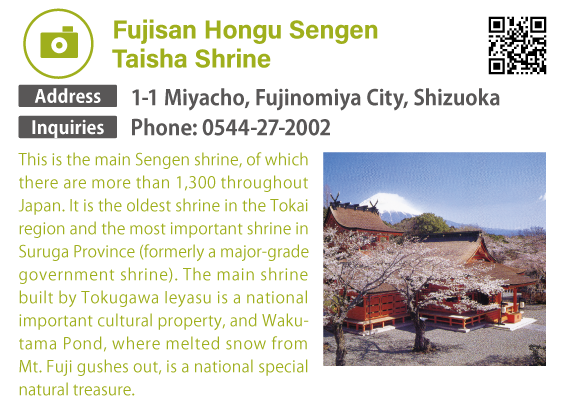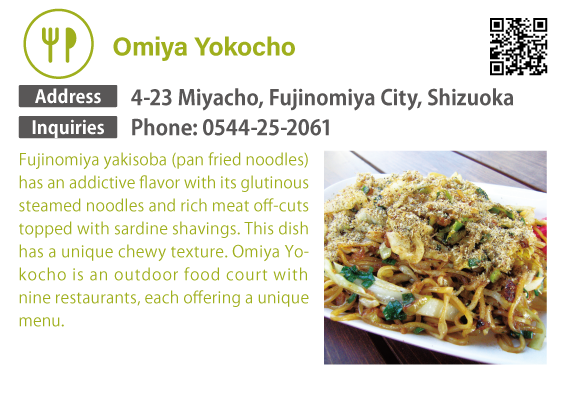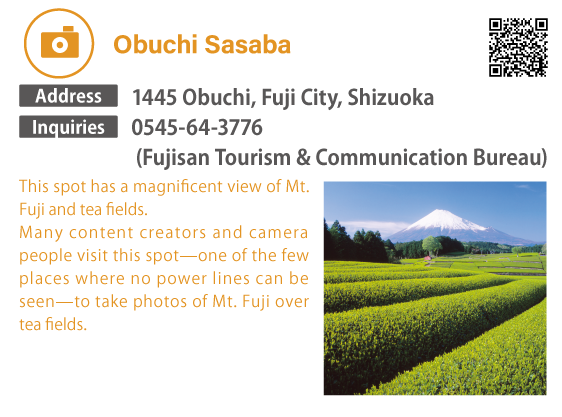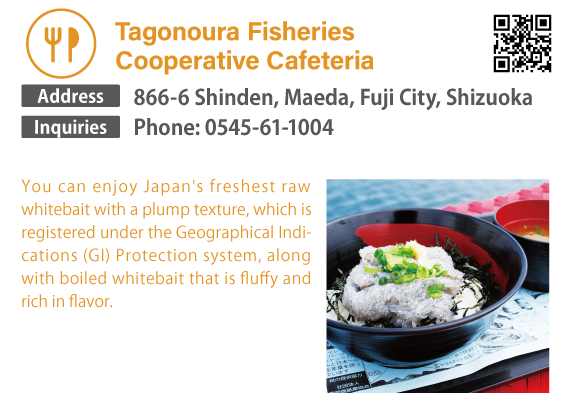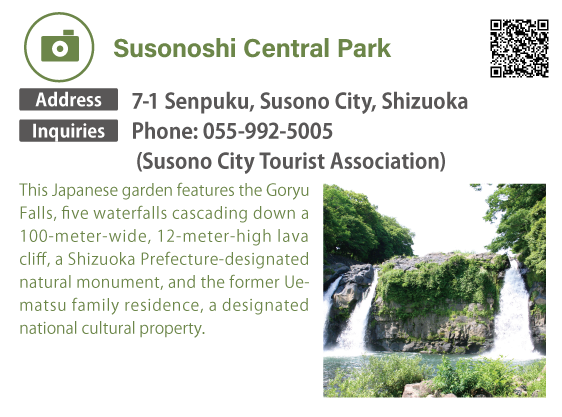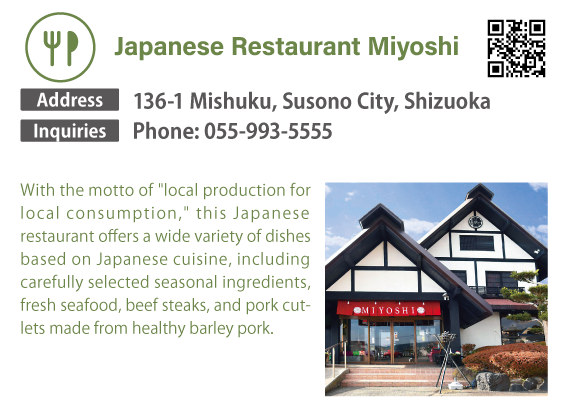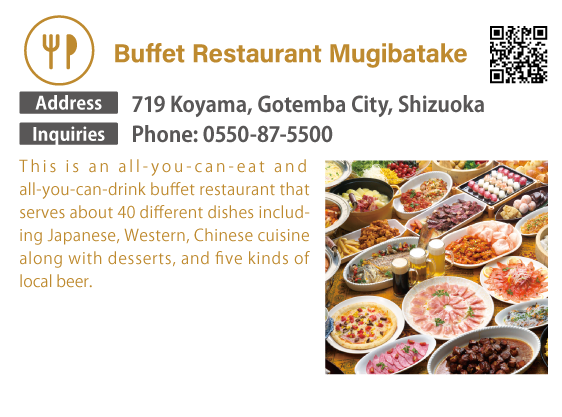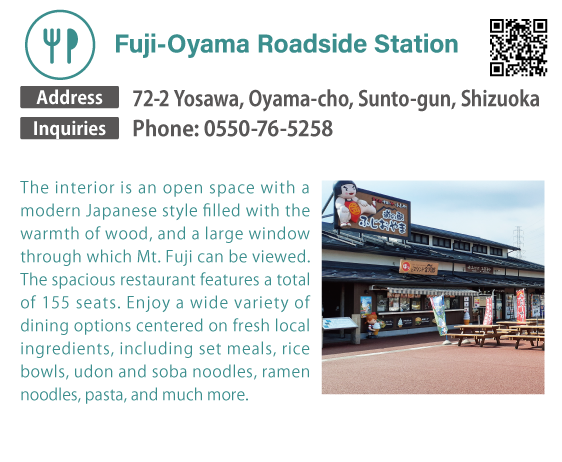What Are
Recommended Routes to Descend Mt. Fuji?
There are many ways to enjoy Mt. Fuji in addition to aiming for the summit.
There are various ways to enjoy going down Mt. Fuji on a descending course or light trek, such as taking in the nature of the mountain, viewing the sea of clouds, checking out the awesome power of the Hoei Crater, and running down on the volcanic gravel.
This site will also showcase some recommended spots carefully selected according to the course, such as hot spring bathing facilities and tasty food around Mt. Fuji.


Promotional Video

Mt. Fuji Descent
Trekking Course
Fujinomiya Trail 5th Station > 6th Station > Hoei Crater Rim > Goten-niwa-ue > Kotenguzuka > Mitsuji > Yotsuji > Futatsuzuka > Gotemba Trail New 5th Station
This is an appealing course featuring the powerful Hoei Crater, the volcanic gravel run, and the woodlands where you can enjoy the vegetation on Mt. Fuji near the edge of the forest. Most of the course is downhill, so you don't need to be physically fit. You can enjoy the fall colors around the middle of October.


Fuji Woodlands
Trekking Course
Mizugazuka Park > Suyama Nobori 1.5 Station > Suyama Kudari 1.5 Station > Makuiwa > Yotsuji > Futatsuzuka > Yotsuji > Makuiwa > Suyama Trail Ascending Route 1st Station (Suyama Otainai) > Mizugazuka Park
This is a trekking course walking from the woodlands to the forest limit, in which the view changes by season—this can be enjoyed throughout the year. (Please ensure you have the appropriate equipment during the severe winter season.)


Kofuji
Trekking Course
Subashiri Trail 5th Station > Komitake Shrine > Kofuji > Subashiri Trail 5th Station
Pass through refreshing woodlands to reach Kofuji. Kofuji offers a magnificent view of the summit of Mt. Fuji, Lake Yamanaka, and Lake Kawaguchi below. You can see Maboroshi Falls in about the middle of May.

■Precautions
- You can reach Mt. Fuji 5th Station by bus during certain periods only. Please check the bus service information beforehand.
- Note that there are no public restrooms except at the start and finish of the courses.
- Be sure to carry a sound-emitting device, such as a waist bell, to protect against bears.
- In the off-season, do not enter the mountains unless you are fully prepared with sufficient knowledge, equipment, and a plan.
■What to bring (equipment)
- Trekking clothes, backpack, high top shoes, shoe spats, food, waist bell, warm clothes, rain gear, poles, sunglasses, sunscreen, hat, bandages, and other medicines.








